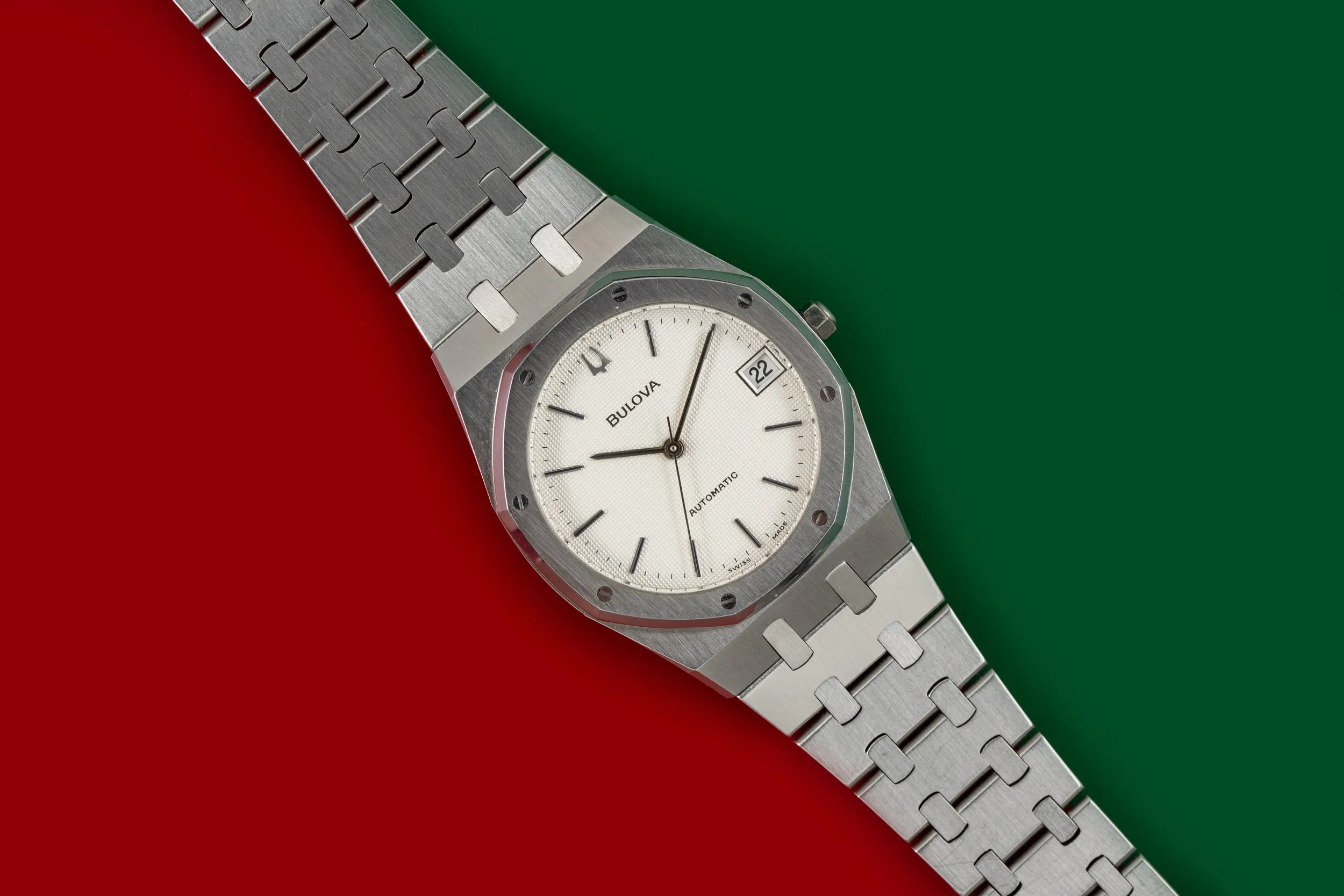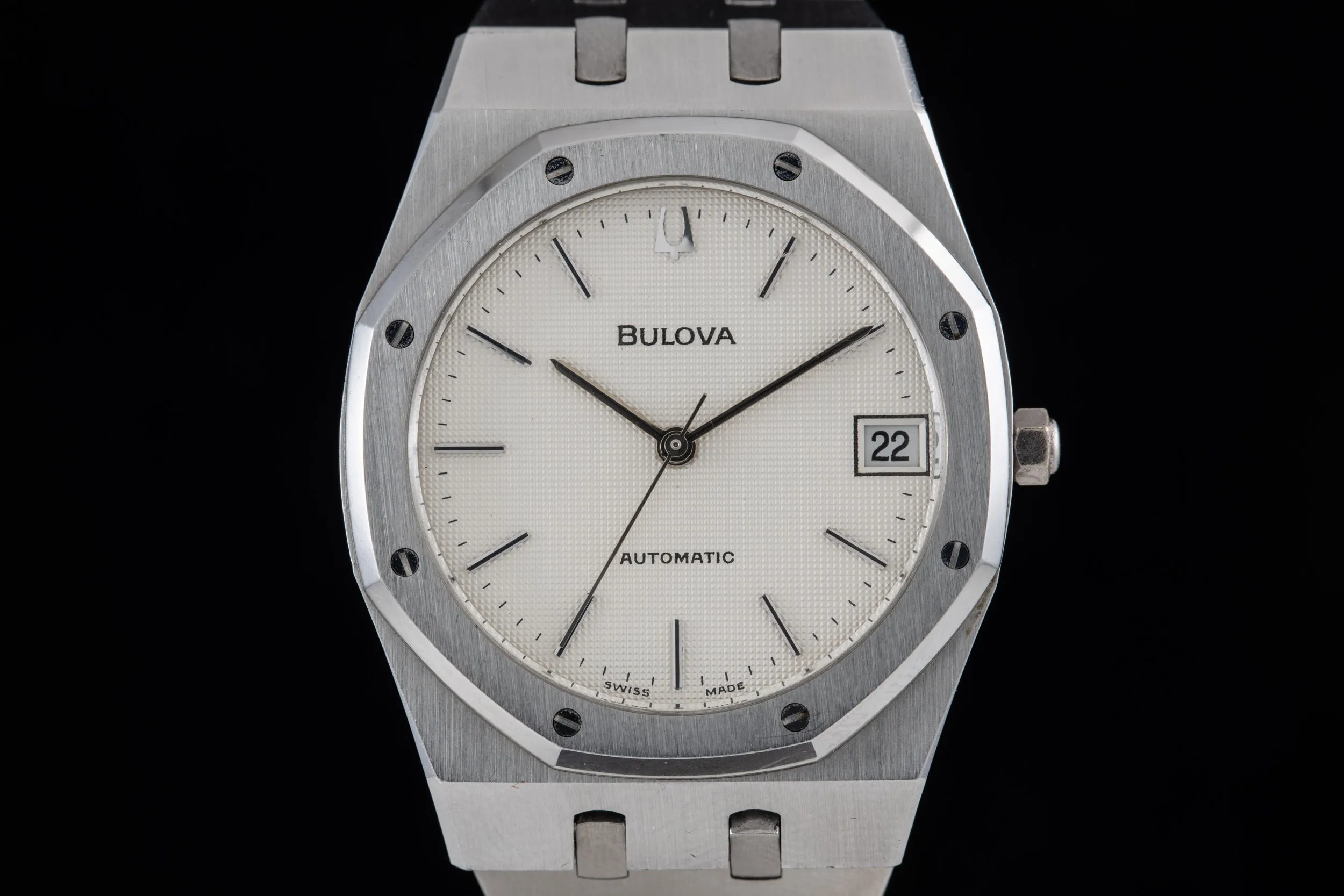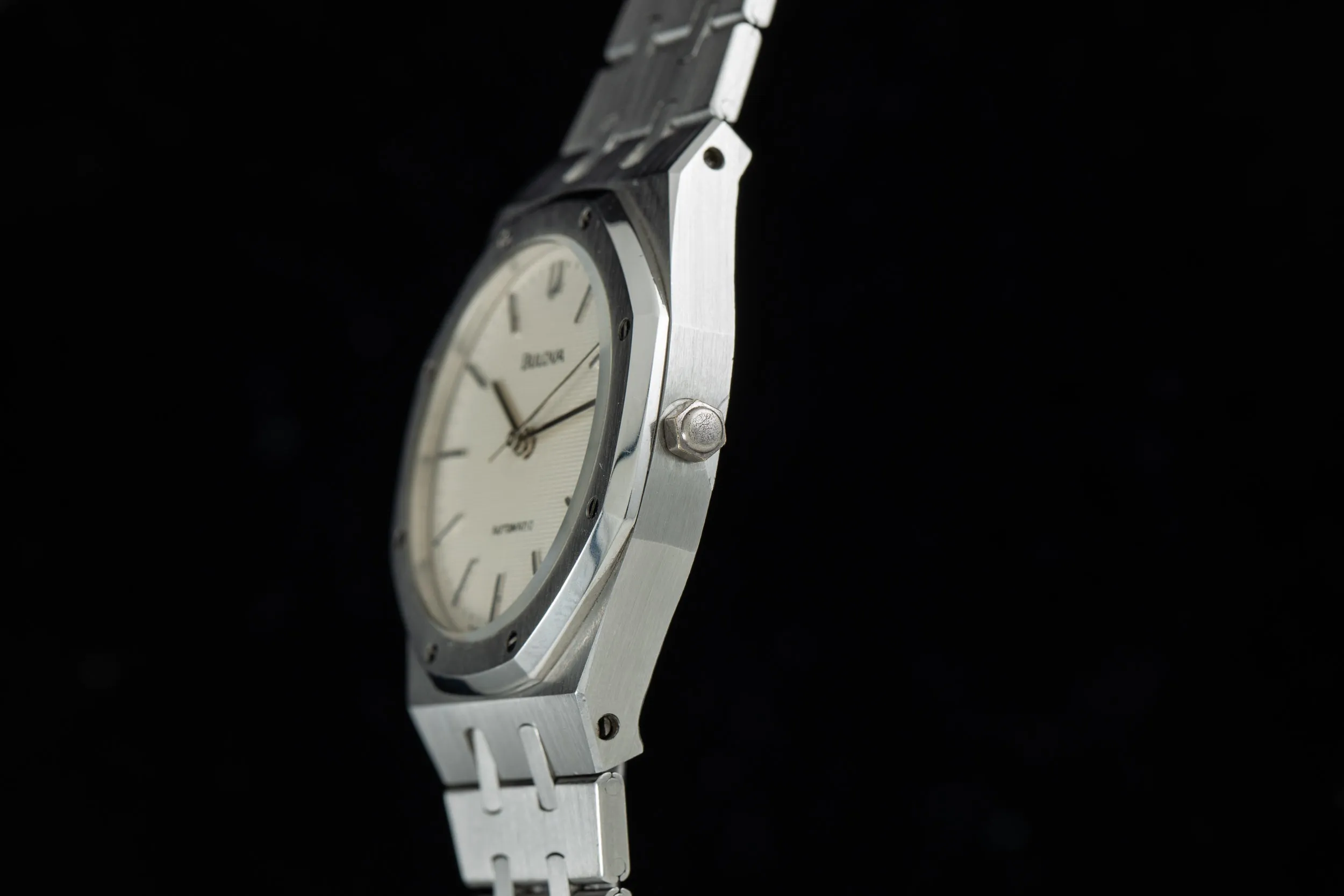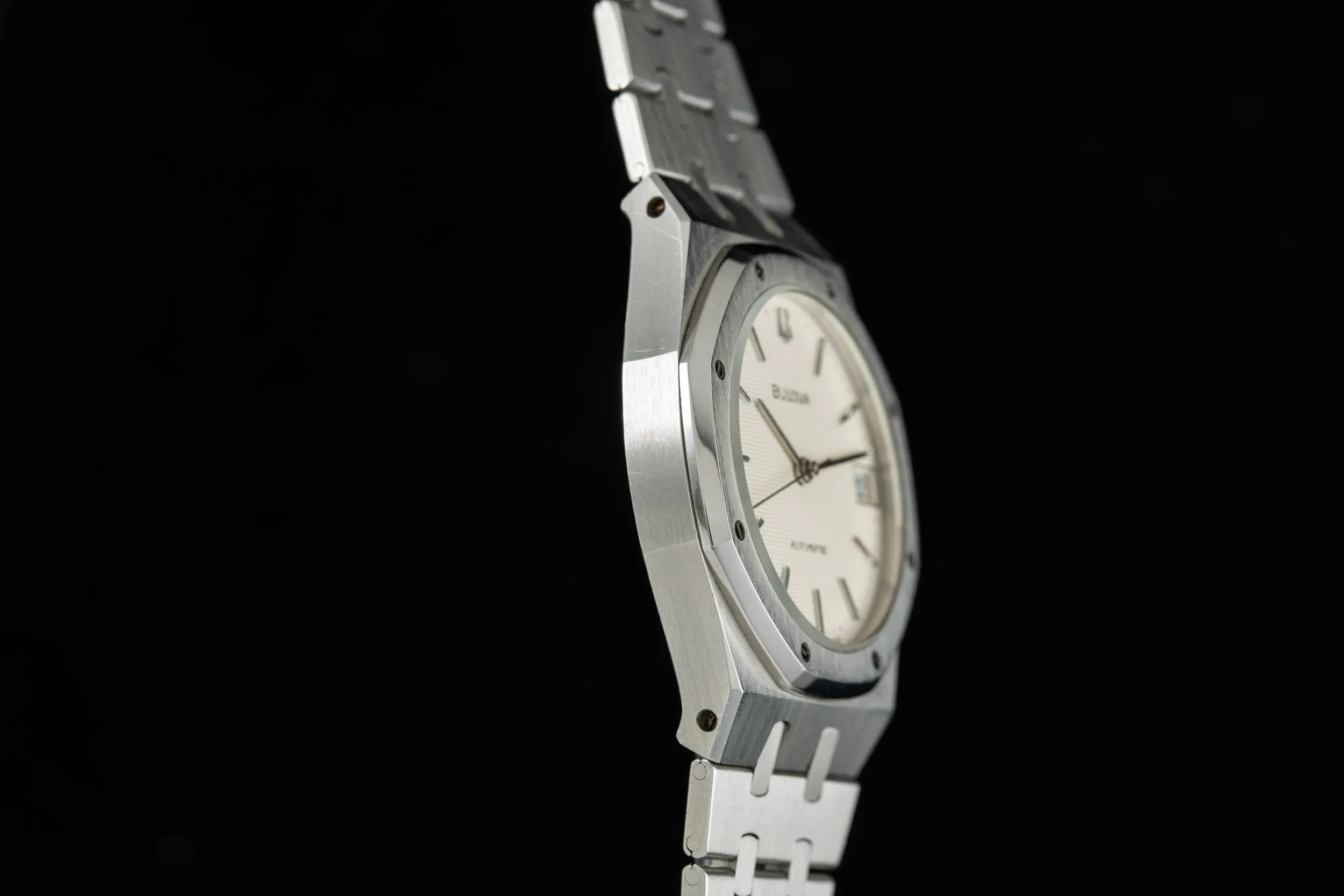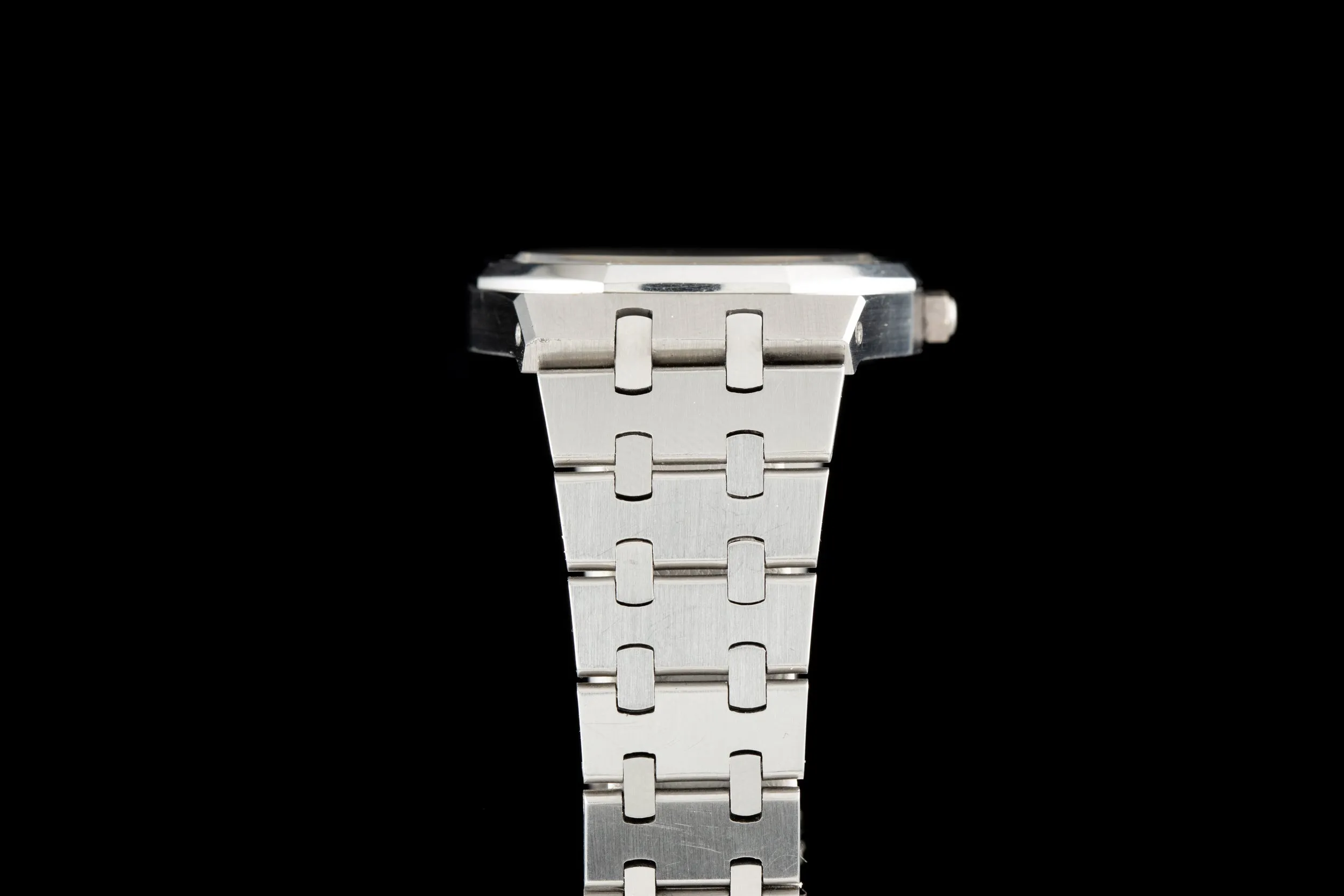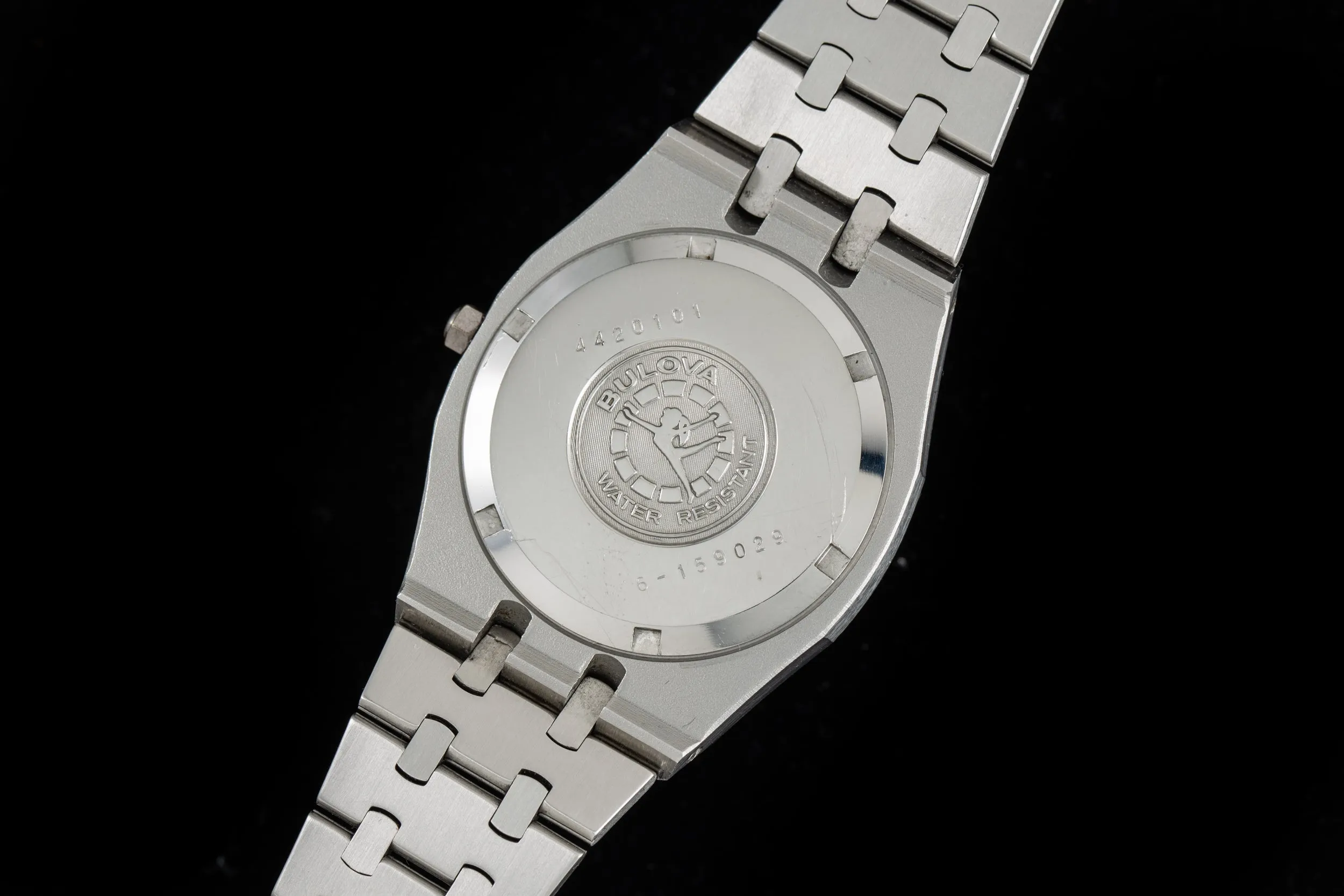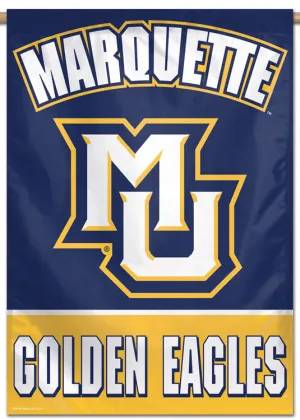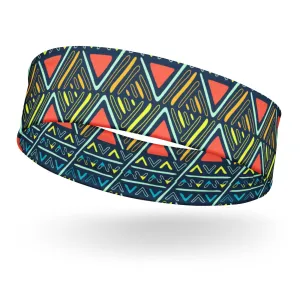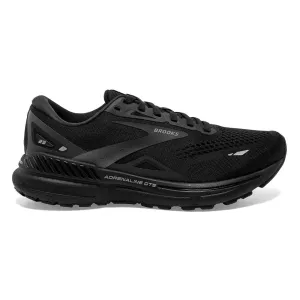Why We Love It
There's just something about this shape, isn't there?
Introduced to the world in 1972 on the legendary Audemars Piguet Royal Oak Reference 5402 "Jumbo" penned by Gerald Genta, this strong geometric case with octagonal bezel and integrated bracelet design has gone on to find itself applied to innumerable AP models - and more than a few homages.
This particular timepiece, a Bulova Reference 4420101, is the American brand's tribute not only to the Royal Oak, but its designer, who worked for Bulova extensively in the 1960s. Admittedly, if this watch were produced today the internet would rise up with cries of "Ripoff!" -- if not worse -- and its very likely some lawyering would be involved. But in the 1970s it was a different world, and everyone was keen to get in on the new "Luxury Sports Watch" category that Audemars Piguet had created - so this cool watch gets a pass!
It doesn't hurt that its a very well built timepiece, either. Sized at 35mm it is nearly identical in proportions to models such as the Ref. 14790 by AP, and is fitted with a stunning silver micro tapestry dial with an even finer finishing than its inspiration from Le Brassus. Powered by an automatic winding calibre and fitted with an integrated bracelet with deployant clasp bearing the Bulova 'Tuning Fork' logo, this timepiece shows just how good an homage can be executed - even if most of them aren't.
Best yet is it the price point - while quartz variants can be had for next to nothing, its a pretty exciting design and a GREAT story to be able to strap on for under $5K, particularly when considering the price of entry for the "genuine" article from Audemars Piguet.
The Bulova Story
The story of Bulova is deeply entwined with American manufacturing.
Its founder, a Czech immigrant named Joseph Bulova, was inspired by the advances that Ford made in his factory in Highland Park, Michigan. Starting in 1912, Bulova built a factory in Biel, Switzerland, using Ford’s principles of mass production.
The brand was among the first to offer a wide range of wristwatches for men, with a distinctive visual style that—thanks to its innovative adoption of advertising and a relocation to Astoria, Queens—became fixed in the American imagination. Bulova took over offices in the Empire State Building and installed an observatory on the roof, in order to measure universal time.
In the workshop down below, watchmakers timed the watches they were working on to readings taken in the observatory.
The watches that Bulova produced were varied, from handsome three-handers to divers and even chronographs. Bulova produced its first chronographs in the 1940s—single-button affairs with screw-on bezels. Throughout the 1950s, 60s, and 70's, Bulova honed its mastery of chronographs.

 Cart(
Cart(
